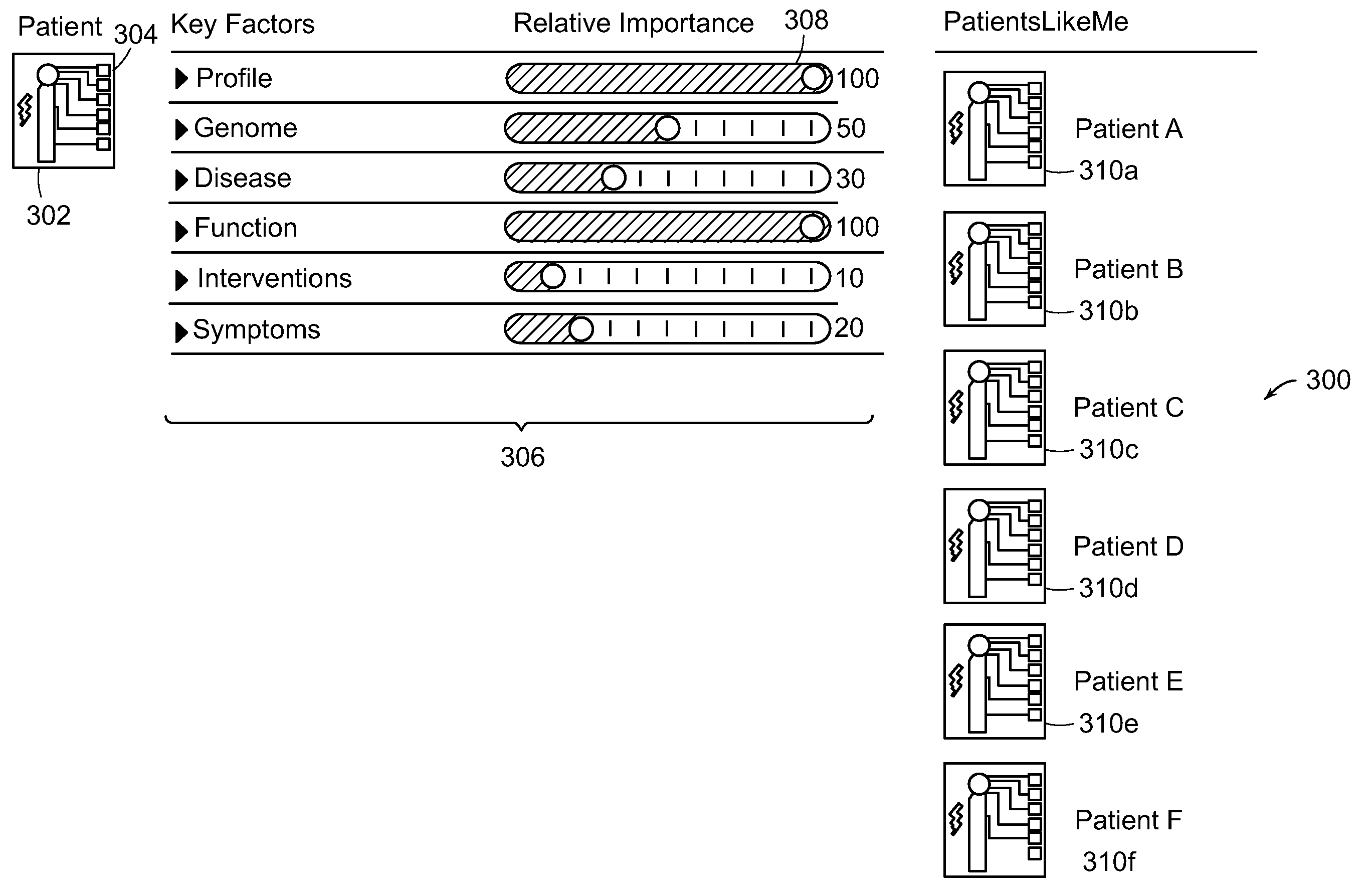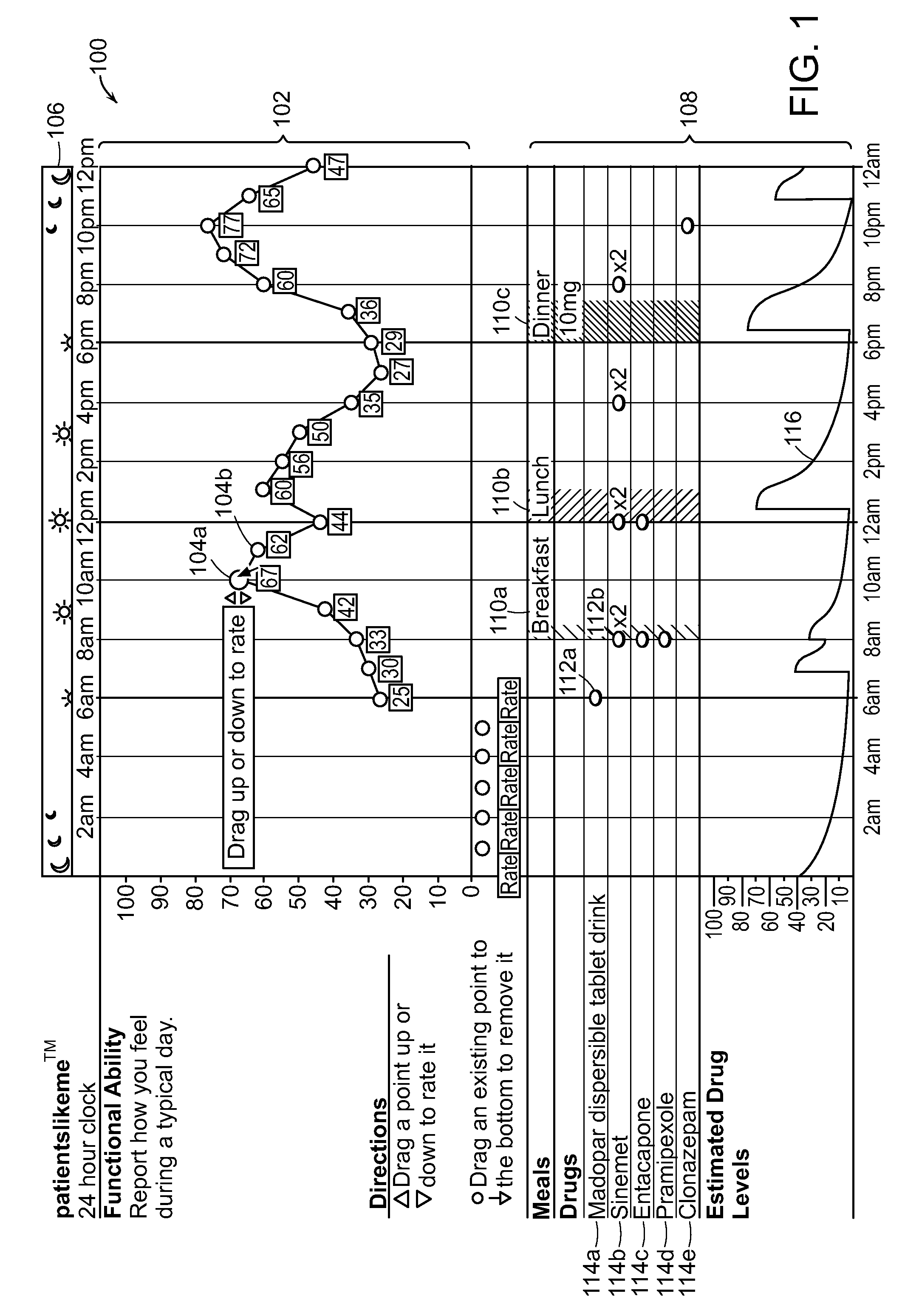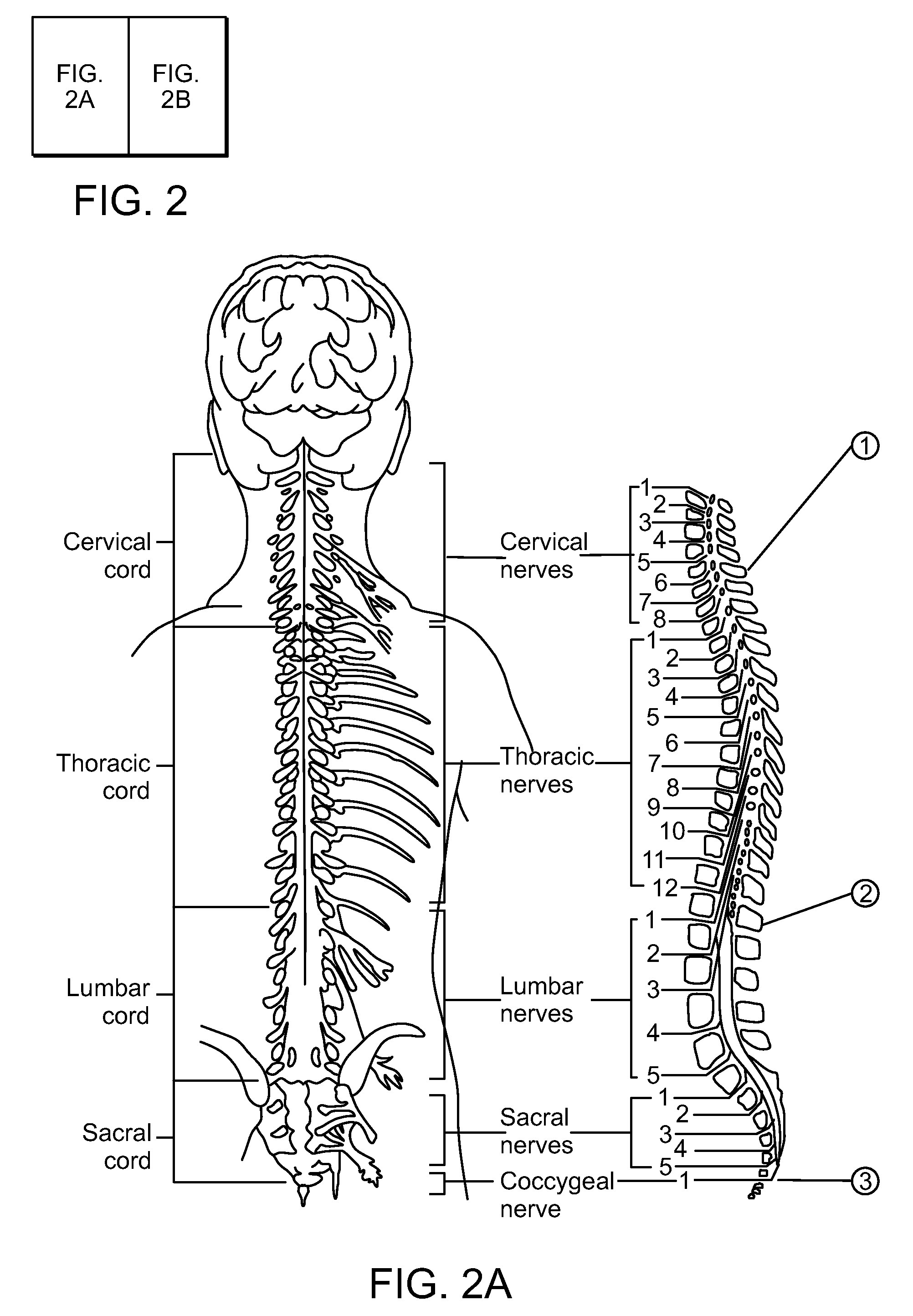Self-improving method of using online communities to predict health-related outcomes
a technology of health behavior and online communities, applied in the field of self-improvement of using online communities to predict health-related outcomes, can solve the problems of insufficient funding, difficult recruitment, and different methods in the research into the relationship between health behavior and outcomes, and achieve the effect of improving outcomes and empowering patients
- Summary
- Abstract
- Description
- Claims
- Application Information
AI Technical Summary
Benefits of technology
Problems solved by technology
Method used
Image
Examples
example 1
Wheelchairs in ALS
[0128]A 55-year old male diagnosed with an inherited form of amyotrophic lateral sclerosis enters data stating that he has been tested for a mutation of the super-oxide-dismutase-1 gene (SODs) known as A4V (Alanine for Valine substitution at point 4). He enters data about his disease progression to-date using a self-report functional outcome scale on his profile in the online community.
[0129]An algorithm compares the likelihood of the patient reaching a given clinical milestone (e.g. needing a wheelchair, needing a ventilator, needing to use assistive technology to communicate) by creating a model comparing him to other patients with ALS that are similar in background and also have an A4V mutation.
[0130]The algorithm can be based on the ALSFRS. Typical rates of progression are linear with most patients progressing at a rate of 1 point per month. However, analysis of the dataset suggest patients with an A4V SODS mutation progress at a rate of 3 points per month.
[013...
example 2
Excessive Gambling in Parkinson's Disease
[0135]A 75-year old male diagnosed with Parkinson's disease enters data stating that he has recently been prescribed the drug MIRAPEX® (pramipexol) at a rate of 2 mg per day. He enters data about his treatment regimen using a data-entry module which records his drug regime on his profile in the online community. He enters data that he has had a previous history of alcohol abuse, depression, and gambling.
[0136]An algorithm compares the likelihood of the patient reaching a given clinical milestone (e.g., developing a known side effect from the drug (pathological gambling), developing tolerance to the drug and needing a higher dose, finding an improvement in his physical health) by creating a model comparing him to other patients with Parkinson's disease that are similar in background and are also taking the same drug at a similar dosage.
[0137]The patient and other patients in the population enter data about at least two medical condition metric...
example 3
Rate of Progression in Huntington's Disease
[0142]A 38-year old male with a clinical diagnosis of Huntington's disease enters data stating that genetic testing by his clinician reveals that he has a relatively low number of pathological CAG repeats on the Huntington gene, having only 40 triple repeats. He enters data that he has a high level of education, a high socio-economic status, and a large family able to support him.
[0143]An algorithm evaluates the likelihood of him having to be looked after in a nursing home by creating a model comparing him to other patients with Huntington's disease that have a similar number of CAG repeats and also have a high level of education, a high socio-economic status, and a large family able to support him.
[0144]The algorithm can use self-reported of functionally ability from other population members as assessed by the Huntington's Disease Rating Scale (HDRS) to predict the patient's future functional ability.
[0145]The patient is presented with the...
PUM
 Login to View More
Login to View More Abstract
Description
Claims
Application Information
 Login to View More
Login to View More - R&D
- Intellectual Property
- Life Sciences
- Materials
- Tech Scout
- Unparalleled Data Quality
- Higher Quality Content
- 60% Fewer Hallucinations
Browse by: Latest US Patents, China's latest patents, Technical Efficacy Thesaurus, Application Domain, Technology Topic, Popular Technical Reports.
© 2025 PatSnap. All rights reserved.Legal|Privacy policy|Modern Slavery Act Transparency Statement|Sitemap|About US| Contact US: help@patsnap.com



